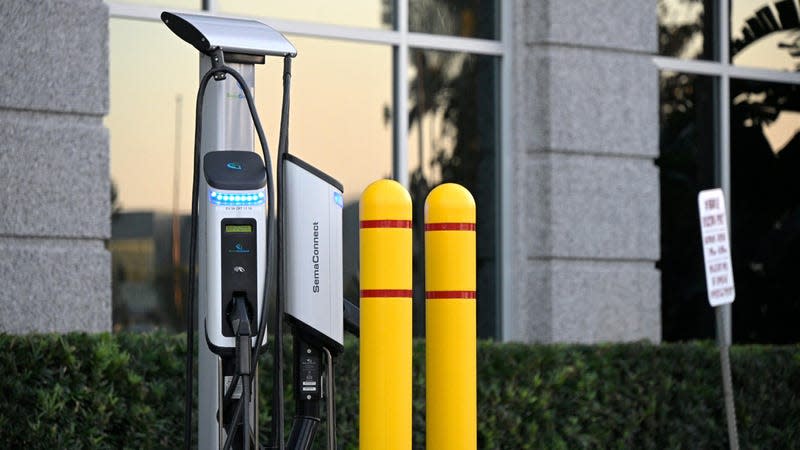It'll Cost The U.S. Hundreds Of Billions To Reach Its 2030 EV Goal: Report

The clock is ticking, and no matter how desperate world leaders are to kick the EV transition into full gear, it seems to become more and more clear that there’s still a lot of work to be done before EVs are truly available for everyone. And it definitely won’t be cheap to do it either. We’re not talking costs in the millions, or hundreds of millions, though. According to a recent report by Automotive News, it will cost the U.S. upwards of $127 billion dollars to supply the millions of chargers needed to support the 2030 EV deadline.
The National Renewable Energy Laboratory — a research and development center that receives federal funding and is sponsored by The Department of Energy — conducted the study, whose findings were shared by Auto News. In this scenario, the lab assumed there would be 33 million EVs on U.S. roads by 2030, along with the high hopes that public and private companies will continue to work together (financially especially) to build up this idealistic infrastructure to support that many electrified vehicles. The grand total to make this transition happen successfully ranged from $55 billion to upwards of $127 billion. And after the national debt ceiling events that transpired most recently, you have to wonder where all that money will be coming from.
Read more
Now, the study’s “mid adoption scenario” isn’t as easy as just everyone shaking hands, and people willingly giving millions or billions of dollars and saying “let’s make this happen.” That’ll never happen. Instead, you have to consider what’s already out there, how many cars are using that infrastructure and how much more is needed. Experian says there’s about 2.4 million EVs on the road as of the first quarter of 2023, which is already a long way off from the 33 million ideally expected to be on the road by that big 2030 deadline.
Researchers also considered how many fast-charging ports would be needed and where, and what kinds of chargers as well. For instance, 182,000 public-facing fast-charging ports would be needed along highways and local areas, along with one million Level 2 chargers, and 26.8 million Level 1 and 2 chargers at homes and private offices. And that’s not even taking into account the maintenance or upgrades maybe needed for existing infrastructure in that time either. That, with Biden’s current goal is to get 500,000 chargers across the U.S. by 2030, and with only 148,000 actually installed at this time — when you look at the math we just laid out, nothing is really adding up, at all.
When you take into consideration the economy in the shape that it is in, along with the national debt and having just navigated that for another minute, as well as the continuing struggle to produce EVs more locally (in America) and affordably, it’s going to be an expensive push to reach what is looking like an incredibly idealistic deadline.
More from Jalopnik
Sign up for Jalopnik's Newsletter. For the latest news, Facebook, Twitter and Instagram.

 Yahoo Autos
Yahoo Autos 